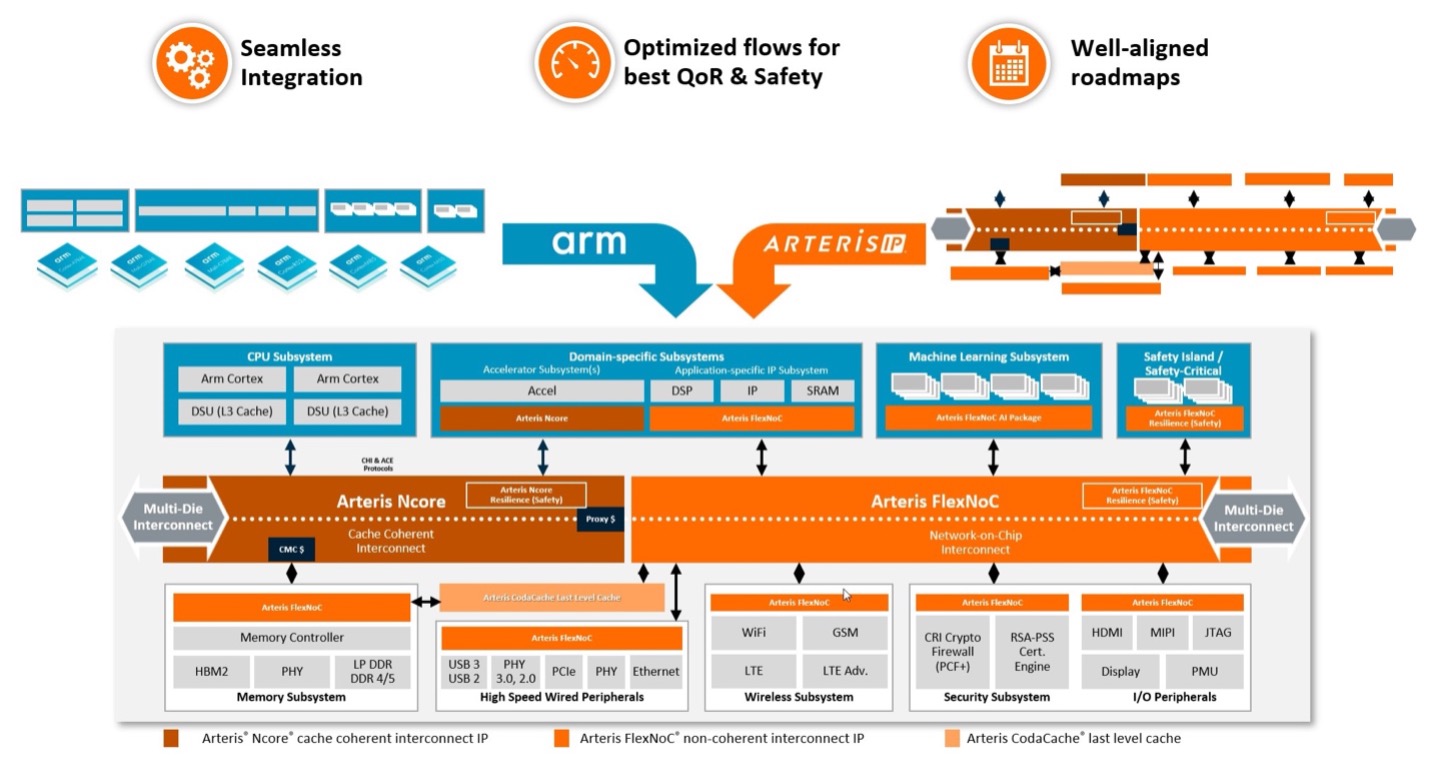Whenever a new partnership is announced, the natural question is, “why?” What will this partnership make possible that wasn’t already possible with those two companies working independently? I talked yesterday with Frank Schirrmeister of Arteris on the partnership. (Yes, Frank is now at Arteris). And I just got off an Arm press briefing on their annual Neoverse update; not directly related to Arteris but heavily plugging the value and continued expansion of their ecosystem. The partnership is good for Arteris but also for Arm in continuing to widen the moat around their strategic advantages.

The first-order answer
Arm cores are everywhere: in mobile, in servers, in communication infrastructure and (most important here) in automotive applications. Arteris IP may not have the market presence of Arm but is also widely popular in automotive applications, including announced customers like BMW, Mobileye, Bosch, NXP, Renesas and many others. Both feeding solutions into an automotive ecosystem which continues to grow in complexity: OEMs, Tier 1s, Semis, IP suppliers, software vendors and cloud service providers. All supplying pieces like Lego® blocks which integrators expect to snap together seamlessly.
But of course, seamless fits between components from varied suppliers integrated into varied systems don’t just happen. Without collaborative partnering, integrators are left to bridge and force fit their own way through mismatches between multiple “almost compatible” components. Arm’s ecosystem, especially at the software level, is a great example of how to minimize integrator headaches in discovering and correcting such problems. The ecosystem assumes the burden of pre-qualifying and resolving integration issues. Integrators can focus instead on what will make their products compelling.
Arteris fits necessarily into the same objective. Optimally configuring the network-on-chip (NoC) bridging between most IPs in an SoC design is as critical to meeting design goals as selecting CPU and other cores. While many successful Arm- and Arteris-based designs are already in production, I’m sure there are areas where Arm and Arteris can work to provide a more seamless fit. Perhaps they can also provide added guidance to integrators. I’m guessing that a program in a similar general spirit to SystemReady® could help grade integrations against best practices.
My guess at a second-order answer
All goodness, but need the partnership stop there? I’m sure it won’t. Here again, I am speculating.
A logical next step would be more work on ASIL-D ready design support. This area has seen a lot of traction recently. An SoC incorporates a safety island, guaranteed ASIL-D ready and responsible for monitoring and reporting on the rest of the design. This communicates through the NoC, connecting to checkers at each network interface which test for consistency errors. A further level of sophistication allows IPs to be isolated on demand for in-flight testing. A failing IP could then be kept offline, signaling the need to report to the driver that a sub-system has a problem. While still allowing the rest of the system to function as intended. These capabilities are already supported in the Arteris IP FlexNoC Resilience package. I have no doubt a stronger integration with Arm-based safety islands could accelerate development of ASIL-D integrations.
Another area I see potential is in tighter integration with advanced AI accelerators. While Arm has its own AI solutions, the AI arena is fizzing with new accelerator options offering a wealth of differentiation. Building such accelerators and supporting their use in SoCs will be a fact of life for many years. Many accelerators use Arteris IP NoCs as their communication fabric. Because such architectures demand a high level of custom configurability, which these NoCs provide. Accelerators typically support AXI interfaces but also need coherence with the main compute pipeline. This is a capability Arteris can support through their Ncore coherent NoC.
Another obvious area for collaboration is in security. Arm is already a leader in this area with PSA and other standards. The NoC, mediating communication across the chip, must also work tightly with the security architecture.
This is good for automotive design
Both companies are well established and proven in automotive. I expect we will hear more over time about how they are expanding the value of the total solution. Good area to watch. You can read more HERE.
Share this post via:





Comments
There are no comments yet.
You must register or log in to view/post comments.